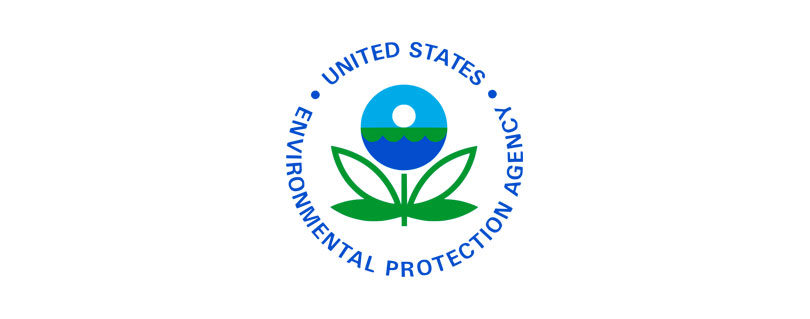EPA Celebrates Earth Week and Agency Efforts to Prevent Plastic Pollution
Publilshed by the U.S. Environmental Protection Agency (EPA)
WASHINGTON – Today, April 26, the U.S. Environmental Protection Agency is wrapping up Earth Week by highlighting the work the agency is doing to prevent plastic pollution.
“Plastic waste is growing and so is the impact it has on public health and the environment,” said Cliff Villa, EPA Deputy Assistant Administrator for the Office of Land and Emergency Management. “This Earth Week, I challenge everyone to do their part to reduce plastic waste to protect our health and ensure that future generations can continue to enjoy a safe and healthy planet.”
Together, everyone can prevent plastic waste from entering the environment by reducing the waste they generate, reusing or recycling plastic products, and picking up littered materials. EPA strongly supports an innovative, equitable and circular approach to preventing plastic pollution from harming human health and the environment, particularly in already overburdened communities.
The agency’s Draft National Strategy to Prevent Plastic Pollution, together with the National Recycling Strategy, identifies actions that governments, businesses, industry, and nonprofits in the U.S. can take to:
- Reduce pollution from plastic production.
- Decrease plastic waste generation by encouraging reuse.
- Capture and remove plastics and other materials from the environment, including waterways and oceans.
- Expand markets for recycled goods.
- Improve materials management infrastructure and increase collection.
- Reduce contamination in the recycled materials stream.
Recently, the 2021 Bipartisan Infrastructure Law provided the largest EPA investment in recycling in 30 years, supporting improvements to waste management systems and programs. Just this past year in September, EPA selected 25 communities to receive grants totaling more than $73 million under the newly created Solid Waste Infrastructure for Recycling funding opportunity. In addition, EPA made available about $32 million for states and territories to improve solid waste management planning, data collection and implementation of plans.
In November, the agency announced 59 selectees to receive over $60 million in SWIFR grants for Tribes and Intertribal Consortia and 25 selectees to receive over $33 million in Recycling Education and Outreach grants. These grants will expand recycling infrastructure and education for waste management systems across the country. EPA also created a Model Recycling Program Toolkit to help communities increase participation in recycling programs and reduce contamination in the recycling stream.
Everyday ways to combat plastic pollution
- Support policies and programs that aim to reduce plastic pollution.
- Purchase products that are designed to be easily reusable or recyclable.
- Participate in community recycling programs if they are available and learn which types of materials the local recycling program accepts.
- Pick up litter in the environment and make sure it can be collected for recycling or proper disposal.
- Reduce and reuse materials in everyday life. The most effective way to prevent plastic pollution is to not create plastic waste in the first place.
Additional Information on Plastic Waste
Plastic is one of the most prevalent materials in daily life—most people don’t go a single day without encountering plastic. And while it’s a valuable resource that can be put to so many uses (and reuses), it’s also a key contributor to pollution. EPA’s estimates show that plastic waste generation in the United States increased from 0.4% of total municipal solid waste generated in 1960 to 12.2% in 2018. Plastic waste that does not make it into the U.S. waste management system often ends up in the environment as plastic pollution.
Plastic pollution is particularly concerning because plastic materials do not fully biodegrade in the environment. Land-based sources account for up to 80% of plastic waste that pollutes waterways and oceans. Plastic pollution has been found in a wide range of organisms and habitats, including coral reefs, estuaries, beaches, and the deep sea. Since plastic material does not decompose, it accumulates in landfills and in the environment. Plastic products also contribute to global greenhouse gas emissions throughout their life cycles, with most of these emissions coming from the production and conversion of fossil fuels into new plastic products. The Organisation for Economic Co-operation and Development estimates that in 2019, plastic products were responsible for 3.4% of global greenhouse gas emissions throughout their life cycles, with 90% of these emissions coming from the production and conversion of fossil fuels into new plastic products.
- Visit EPA’s webpage on plastics to learn more about plastic pollution and ways to combat it.
- Visit EPA’s webpage on materials and waste to learn more.
- Visit EPA’s webpage on circular economy to learn more.
- Visit EPA’s webpage on Bipartisan Infrastructure Law initiatives to learn more.
Visit EPA’s Trash Free Waters program webpage to learn more.
Read the full article at: https://www.epa.gov/newsreleases/epa-celebrates-earth-week-and-agency-efforts-prevent-plastic-pollution


